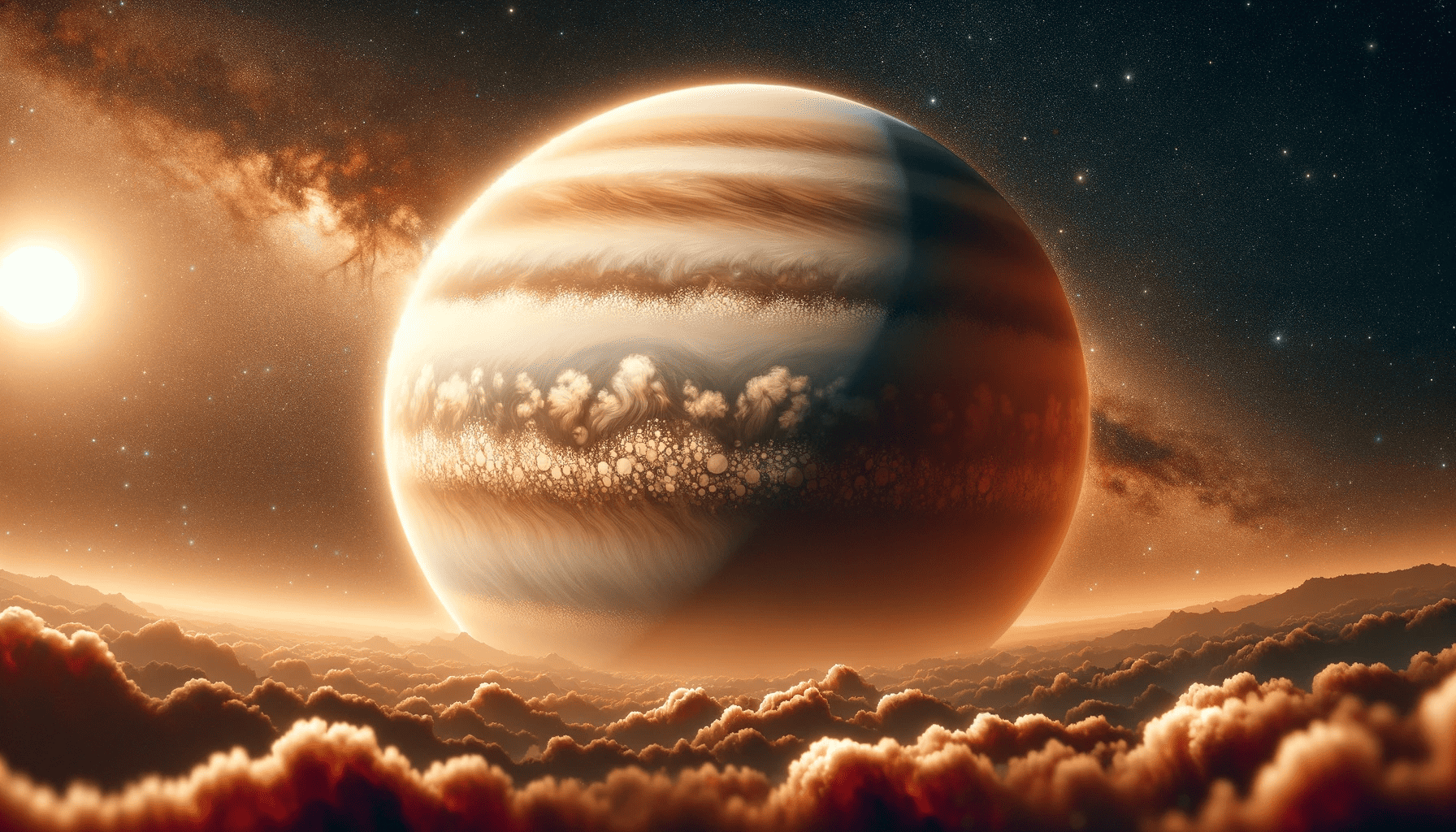
The James Webb Space Telescope (JWST) again reminded astronomers that the Universe has a few tricks up its sleeve. The latest subject of interest is WASP-107b, rewriting the rulebook on what astronomers thought they knew about exoplanets. Thanks to the Mid-Infrared Instrument (MIRI) aboard JWST, a team of European astronomers from KU Leuven has taken a deep dive into this exoplanet’s atmosphere, and the findings are intriguing. WASP-107b literally rains sand.
WASP-107b is a warm exoplanet with Neptune’s mass and Jupiter’s radius. This makes it ‘fluffy’ compared to the giant gas planets in our Solar System. This unusual size-to-mass ratio has given astronomers a unique opportunity to probe its atmosphere roughly 50 times deeper than more dense planets like Jupiter. The planet’s extended atmosphere has become a focal point in astrophysical research because of the startling discovery of what can be compared to sand raining from its atmosphere.
In contrast to Earth’s atmosphere, where water freezes at low temperatures, silicate particles can freeze to form clouds in gaseous planets reaching blazing 1,832 °F (1000 °C) temperatures. WASP-107b, however, does so with an outer atmosphere temperature of just half of that. Interestingly, sand clouds can actually rain down in the form of… well… sand. This makes astronomers curious about how these sand clouds form and persist at such high elevations.
“The fact that we see these sand clouds high up in the atmosphere must mean that the sand rain droplets evaporate in deeper, very hot layers and the resulting silicate vapor is efficiently moved back up, where they recondense to form silicate clouds once more,” said lead author Michiel Min. “This is very similar to the water vapor and cloud cycle on our own Earth but with droplets made of sand.”
Silicate clouds at high altitudes in a relatively cool part of the atmosphere call into question long-held beliefs regarding cloud formation in planetary atmospheres. It indicates dynamic atmospheric processes influenced by gravity, UV irradiation, and metallicity.
The study, published in Nature, reveals the presence of water vapor, sulfur dioxide (SO2), and silicate (a component of sand) clouds, but notably, no trace of the greenhouse gas methane.

The lack of methane provides a peek into the flow of heat energy in the planet’s atmosphere and suggests a potentially warm interior. One surprise was the discovery of sulfur dioxide. Despite earlier predictions to the contrary, new climate models of WASP-107b’s atmosphere reveal that sulfur dioxide can form by virtue of the planet’s fluffy nature. Due to the host star’s lower temperature, only a small percentage of high-energy photons are emitted. However, these photons can penetrate farther because of the planet’s atmosphere. This enables the chemical reactions required to produce SO2.
Discovering silicate clouds in WASP-107b’s atmosphere adds a new layer to our understanding of exoplanetary weather. The finding is significant because it provides direct evidence of high-altitude clouds on an exoplanet, a phenomenon that has been challenging to pin down until now.
Finding silicate clouds provides the first direct observation of such phenomena in an exoplanet’s atmosphere. These clouds, made up of small, amorphous silicate particles, suggest a formation cycle involving condensation and evaporation at different atmospheric levels. This cycle could indicate strong mixing from either a hot inner atmosphere or the planet’s intensely irradiated hot dayside.
“The discovery of clouds of sand, water, and sulfur dioxide on this fluffy exoplanet by JWST’s MIRI instrument is a pivotal milestone,” said lead author Leen Decin. “It reshapes our understanding of planetary formation and evolution, shedding new light on our own Solar System.”









